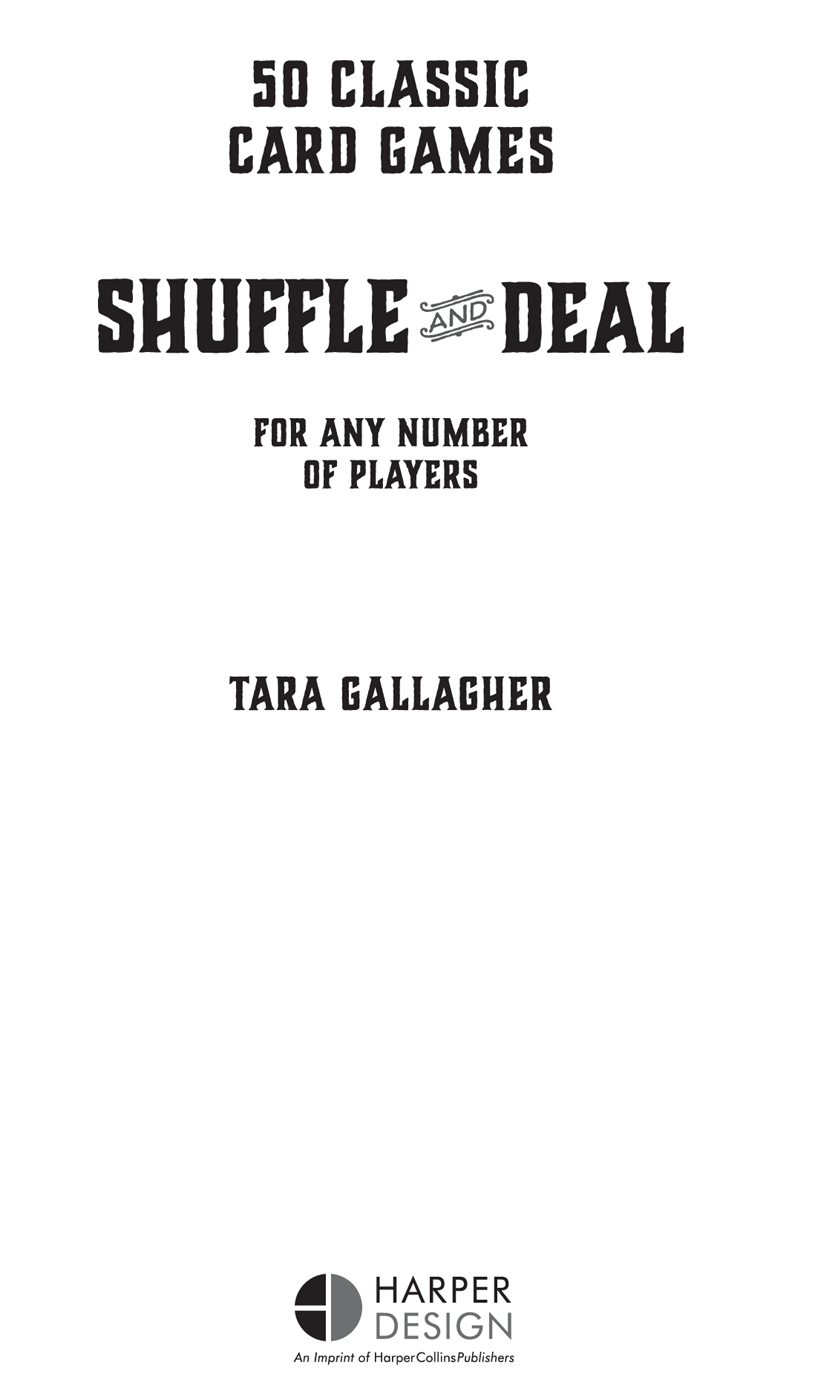
HOW TO USE THIS EBOOK
Select one of the chapters from the and you will be taken straight to that chapter.
Look out for linked text (which is underlined and/or in a different color) throughout the ebook that you can select to help you navigate between related sections.
CONTENTS

For three years between 1678 and 1681, a fictitious Catholic plot to assassinate Charles II and seize power known as The Popish Plot gripped public imagination in England and Scotland. In fact, the conspiracy was entirely concocted by Anglican chaplain Titus Oates, who was eventually convicted of perjury. During the hysteria, and as illustrated in the 1, Benedictine monks were suspected of involvement in the plot. The 2 shows how recent disasters such as the Fire of London were retro-spectively blamed on Catholic arson.
INTRODUCTION
 ard games are the ultimate testament to human genius for making long hours fly by. People interacting with other people is what card games are all about, and the number of new ones that pop up year after year shows theres something enduringly appealing about beating the pants off your neighbor, boyfriend, or grandma.
ard games are the ultimate testament to human genius for making long hours fly by. People interacting with other people is what card games are all about, and the number of new ones that pop up year after year shows theres something enduringly appealing about beating the pants off your neighbor, boyfriend, or grandma.
Speaking of your grandma, the games featured in this book arent her games, but that doesnt mean you cant play them with heractually were pretty sure shell love them. All the games weve included have been picked because theyre addictive, hilarious, and offer something a bit different from the old favorites.
Whether youre in a leaky tent halfway up a windy hill-side or a villa in a fragrant orange grove, whether youre in a in a bar or a student dormwe want you to whisper and yell, to cheat and get caught, to lose horribly and win the whole game, to weep with laughter, spill your drink, and make fantastic memories.
Playing cards originated in tenth-century China, but decks of cards similar to the ones we know didnt arrive in Europe until the fourteenth century. How they arrived in Europe is a bit of a mystery, but these days its widely accepted that they arrived from the Egyptian Mamluk empire via Mediterranean traders.
In these early days cards were a luxury commodity, because, prior to Johannes Gutenbergs invention of the movable-type printer circa 1450, each set had to be painstakingly painted or drawn by hand. This meant that the humble deck of cards actually represented a pretty expensive toy. However, as soon as decks of cards became affordable enough to be within the reach of ordinary people, the popularity of card games went through the roof, enough so that honest clergymen were soon found pounding the pulpits against the evils of decadent gaming.
The suits evolved along with the decks, too, and actually the Hearts, Spades, Diamonds, and Clubs that most people are familiar with are relatively late additionsa French innovation dated to the fifteenth century. The first suits seen in Europe flourished around the Mediterranean and were copied from the Cups, Swords, Coins, and Polo sticks of Islamic decks of cards. Over time many countries created their own suits, such as Germanys Heart, Bell, Leaf, and Acorn motifs that are still in use today.
Upper-class Victorian society had a thing for Whist, while twentieth-century suburban Bridge parties were popular with the cocktails-before-dinner set; different games have waxed and waned in popularity throughout the history of playing cards, depending on how compatible they were with contemporary lifestyle. For you, the twenty-first-century reader, weve come up with games that are group oriented, fast paced, and fun.
Weve included some noisy, easy-to-grasp ones with big groups in mind, and tactical tanglers that should have you plotting against your nearest and dearest; games that suit groups of various sizes and games that have never been published in book form before. Now pick a page, grab your deck, and go have fun!

AVALANCHE
INVENTED BY
Kpolns Gyrgy and Lgrdy Gbor
Avalanche is an unusual but very fun option for two to six people that needs a minimum of two full decks, including six Jokers. If you have more people, add more packs of cards to make the game comfortable to play.
No. of players: Difficulty: medium
AIM
Collect the most cards.
DEALING
Suits dont matter in this game; youll be paying attention to numbers. The card order goes from 2 as the lowest card to Ace as the second-highest card, with the Joker as the highest card. Everyone is dealt ten cards, and the rest of the deck is placed face down on the table.
PLAY
To start the game, in the first round everyone picks one of two options:
Snowfall: Taking a card from the top of the deck and adding it to your hand.
Start an avalanche: Placing any number of cards with the same number/rank (e.g., two 5s, three Kings) face up.
GAME TIP
The number of Jokers in a deck variesif you have two decks but are missing some Jokers, use an ID or loyalty card, or get crafty and make yourselves some more out of paper or cardboard.
Once an avalanche has started (remember, an avalanche means there are cards face up on the table), fittingly enough, it cant be easily halted. Players no longer have the option of playing a snowfall. They can:
Grow the avalanche: Put down the same number of cards as the last person to play did, of equal or higher rank, or more cards of any rank (e.g., if they put down two 5s, you could put down two 5s, two cards higher than 5s, or three 2s).
Stop the avalanche: If the last person to play put down at least two cards, put down the same number of cards but of lower rank.
Let the avalanche fall: Put down fewer cards than the previous player, or, if the previous player played just a single card, play a card of lower rank.
GAME OVER
Once the deck is empty, you cant play any more snowfallsits all avalanches from here on! If there isnt one already, the next person to play has to start one, and once they run out of cards theyre out. This keeps on going until just one player left with cardsthey add their cards to their stored pile of cards and resist the urge to look smug.
Once an avalanche has been stopped or allowed to fall, the next person to play can either choose to play a snowfall or to start a new avalanche.
When the avalanche falls: The face-up avalanche cards are given to the player to the right of the one who let it fall, who then stores them face down. (Remember, the aim of the game is to have the most cards at the end!)
When the avalanche stops: The avalanche cards are taken out of the game and put to one side. If at the end of a round the player has no cards left in their hand, they should draw a new hand of ten cards from the top of the deck, or all the rest of the cards if there are fewer than ten left.
BASIC RUMMY
There are lots of different permutations of Rummy; this version will give you all of the basics so youll be familiar with the other versions, such as , featured. Rummy can be played with as few as two players, or as many as six. Either a fixed number of deals are played, or the game is played to a target score. The number of deals or the target score needs to be agreed upon before beginning to play.

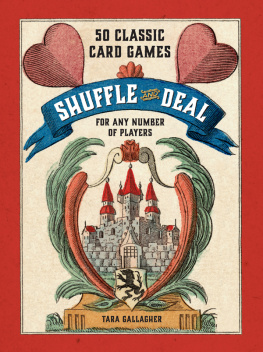

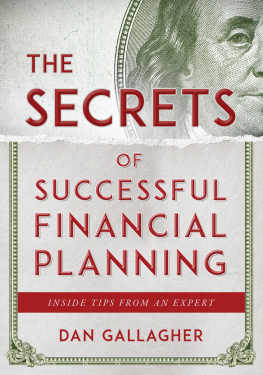
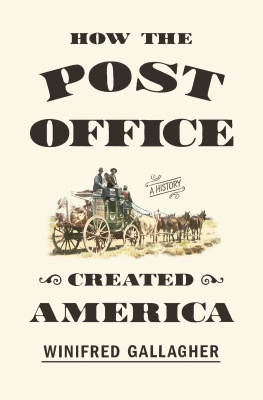




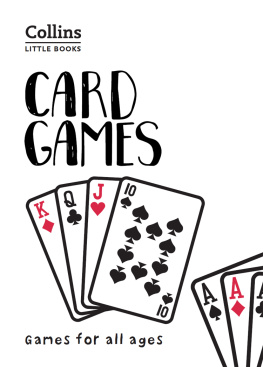





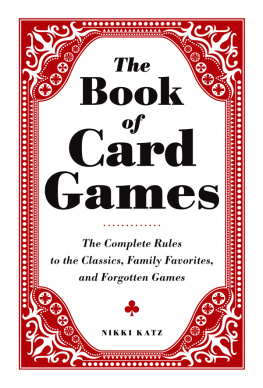



 ard games are the ultimate testament to human genius for making long hours fly by. People interacting with other people is what card games are all about, and the number of new ones that pop up year after year shows theres something enduringly appealing about beating the pants off your neighbor, boyfriend, or grandma.
ard games are the ultimate testament to human genius for making long hours fly by. People interacting with other people is what card games are all about, and the number of new ones that pop up year after year shows theres something enduringly appealing about beating the pants off your neighbor, boyfriend, or grandma.